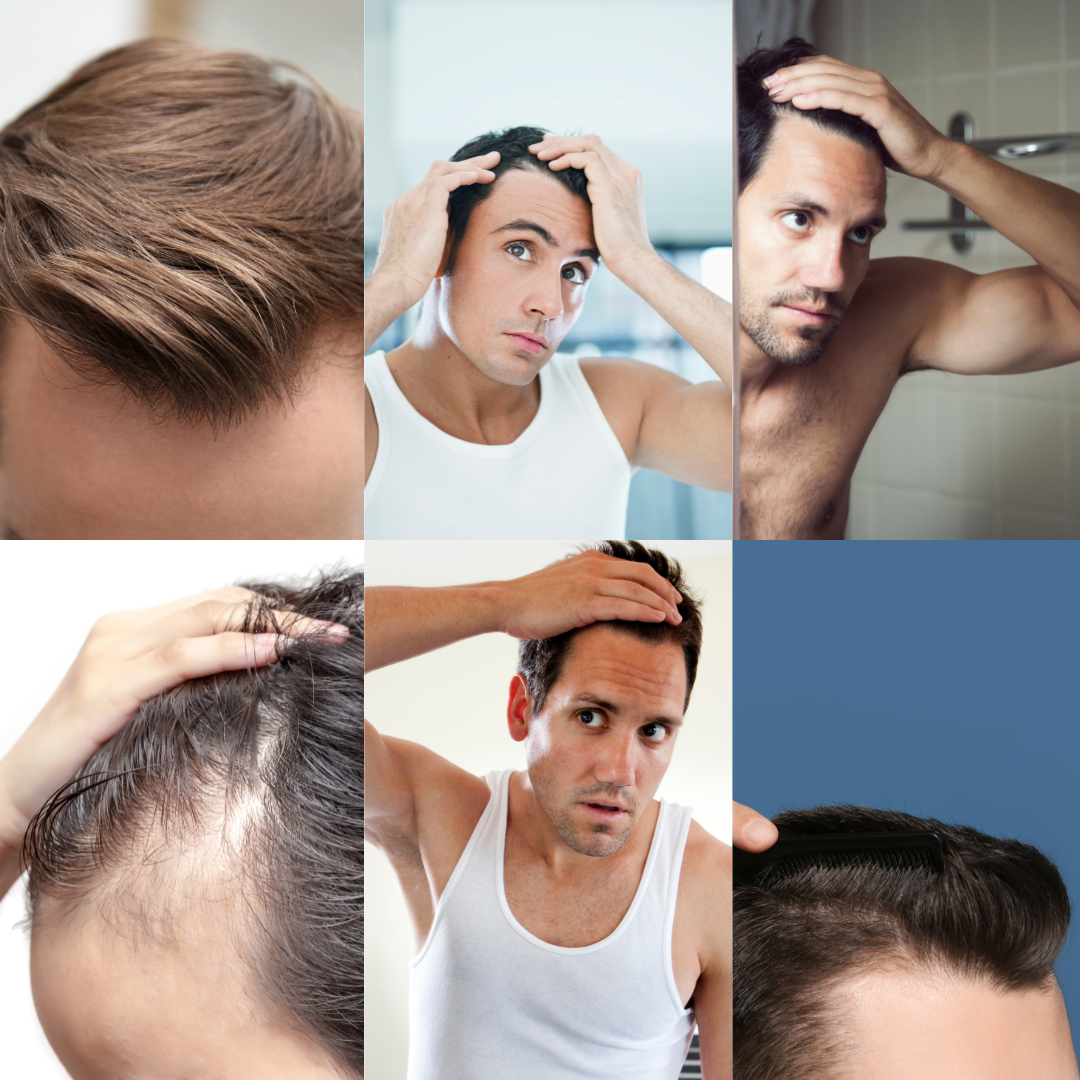What Are the Different Types of Hairlines?
Introduction
Have you ever wondered why some people have straight hairlines while others have more distinct shapes? The hairline is the boundary between our forehead and scalp, and it can come in various forms and sizes. In this article, we will explore the different types of hairlines, both for men and women. We also look into what factors determine our unique hairline type. We will also discuss ways to maintain and improve your hairline naturally. So, let’s dive in and unravel the mystery behind our crowning glory!
What is a hairline?
Before we delve into the different types of hairlines, let’s first understand what a hairline is. Simply put, a hairline is the line where hair growth begins on our forehead. It marks the transition from our forehead to our scalp and plays a significant role in framing our face.
The hairline is not a mere boundary between our forehead and scalp. It is a defining feature that can very much impact our overall appearance. It can vary in shape, thickness, and position. This can be influenced by various factors such as genetics, age, and lifestyle.
1. Straight Hairline: One of the most common types is the straight hairline. This type of hairline is often seen in individuals with thick, straight hair.
2. Rounded Hairline: Another type of hairline is the rounded hairline. This type has a gentle curve along the forehead. This type of hairline is often seen in individuals with softer facial features. It can give a more youthful appearance.
3. Receding Hairline: Some people have a receding hairline. This appears due to hair loss or thinning hair from the forehead. This type of hairline is more often seen in men. This type of hairline appears due to factors such as genetics, hormonal changes, and aging.
4. Widow’s Peak: There is also the widow’s peak hairline. A V-shaped point in the center of the forehead characterizes it. This type of hairline is often associated with a more prominent and defined facial structure.
What are the different hairline types for men?
When it comes to men’s hairlines, variety is the spice! Each type of hairline has its unique charm and can impact the appearance of a man’s face. Here are the common types:
1. Straight Hairline: A neat and even line across the forehead, adding balance and symmetry. It’s classic and suits various hairstyles, lending a youthful touch.
2. Receding Hairline: It moves backward gradually, leaving a more noticeable forehead. While it’s a natural part of aging, many see it as a sign of male pattern baldness.
3. Widow’s Peak: A V-shaped hairline at the center, offering character and uniqueness. It gives a sharp, defined look to the face.
4. M-shaped hairline: With two receding points like the letter ‘M’ near the temples. it imparts a mature, masculine vibe. It adds depth to the face, often paired with shorter, textured styles.
5. Curved Hairline: A gently curved line rather than straight, framing the face with a softer touch.
6. High Hairline: A high up on the crown hairline sits at the top of the head. It can be straight or a bit rounded, giving a taller appearance to the forehead.
7. Low Hairline: Positioned lower on the forehead, creating a shorter forehead appearance.
8. Uneven Hairline: Characterized by irregular, uneven edges along the forehead. Appeared in a distinct and unconventional look.
What are the different hairline types for women?
Women also have a wide range of hairline types. Some common different types of hairline for women include:
1. Straight Hairline: Like men, women can sport a straight line and aligned hairline. This classic and versatile type allows for various hairstyle choices.
2. Widow’s Peak: This type has a distinctive V-shaped dip in the middle of the hairline. It is often referred to as a widow’s peak.
3. High Hairline: A high hairline creates a bit more space between the eyebrows and the hairline.
4. Middle Hairline: This particular hairlines, is often termed average hairline. It rests in the middle of the forehead.
5. Low Hairline: A low hairline begins closer to the eyebrows. Giving the illusion of a shorter forehead.
6. M-Shaped Hairline: Resembling the letter “M”. This type can be a defining and distinct feature. It is also linked to female pattern baldness.
7. Bell shaped Hairline: Widening near the temples and narrowing at the center. It gives hairstyles character and balance with its distinctive frame.
8. Triangular Hairline: Broadening from the temples and tapering towards the forehead center. its angular structure shapes hairstyle choices with its unique form.
These primary hairline types offer a glimpse into the diversity among women.
What Decides Your Hairline Type?
Genetic factors largely influence the types of hairlines each individual possesses. The genes we inherit from our parents play a significant role in determining the shape, height, and appearance of our hairline.
1. Genetics: Our hairline looks mostly because of our family genes. They decide if our hairline is straight, goes back, or has a widow’s peak.
2. Age: As we get older, our hairline might change. This happens to everyone and is different for each person. It’s because of how our genes and hormones work together.
3. Hormones: Hormonal changes can also impact our hairline. When we’re growing up or when women have babies or become older, hormones can change our hairline. It’s because these hormones affect how our hair grows.
4. Medical Conditions: Alopecia areata, a type of autoimmune disorder, can cause hair loss and affect the shape and density of the hairline. Sometimes, sickness or scalp problems can make us lose hair or change our hairline. Not eating well or using too much heat on our hair can also make changes.
While we cannot change our genetic makeup, there are ways to maintain and improve the health of our hairline. A balanced diet, regular exercise, and proper hair care help to keep hairline healthy. Using gentle products and shielding our hair from heat and outside things also keeps it safe.
Understanding these things helps us take care of our hairline better, no matter what kind it is. Taking care of our natural hairline helps us feel good about our appearance.
Maintaining your hairline: How To Improve Your Hairline Naturally?
Your hairline deserves some TLC, just like the rest of your hair. Here are some tips to help maintain and improve your hairline naturally:
1. Practice good hair care habits, including regular washing, and conditioning. Avoids excessive heat styling.
2. Eat a balanced diet rich in vitamins and minerals. This may help to promote hair health, such as biotin, zinc, and vitamin E.
3. Avoid tight hairstyles or constant tension on your hairline, as it can lead to hair breakage.
4. Protect your hairline from excessive sun exposure by wearing a hat or using sunscreen designed for the scalp.
5. Scalp massage: Consider incorporating scalp massages into your hair care routine. It helps stimulate blood circulation in the scalp and promote hair growth.
By doing these things, you can keep your hairline healthy and prevent problems with it.
How can I change my hairline?
You can’t change your natural hairline. But there are tricks for a temporary solution to alter their appearance. Trying different hairstyles, bangs, or hair extensions can make it seem like your hairline’s different. Keep in mind, though, that these are only for short-term changes and won’t last forever.
Conclusion
In conclusion, our hairline type is determined by a combination of genetics and various other factors. Whether it’s straight, receding, or has a cool widow’s peak, love what makes you different and know that real beauty comes from the inside.
If you’re worried about losing hair or curious about your genes and hair issues, check out the HairLife DNA test. Learning about your genes can help you know more about your hair and find ways that suit you best.
Frequently Asked Questions
Can hairline shape change with age?
Yes, hairline shape may change with age due to hormonal factors and natural aging processes. It is common for hairlines to recede slightly over time.
Can I prevent a receding hairline?
While you cannot prevent a receding hairline entirely. Maintaining a healthy lifestyle and taking care of your hair can help slow down the process and promote hair health.
Can stress affect my hairline?
Yes, stress can contribute to hair loss, which may indirectly affect your hairline. Managing stress through relaxation techniques and self-care practices can help maintain hair health.
Are there any surgical options to change my hairline?
Yes, hair transplant surgery is an option for those looking to permanently alter their hairline. However, it is important to consult with a qualified professional to determine if this procedure is suitable for you.
What type of hairline do I have?
You can check out the details about different hairline types mentioned in this article and compare them to see which one matches yours.
Can a too-low hairline or widow’s peak be adjusted?
Yes, laser hair removal or electrolysis are options to adjust a too-low hairline or widow’s peak. A solution for those seeking to alter their hairline appearance.
Book a consultation
Simply fill in your details in the form below and we’ll get in touch with you shortly.






